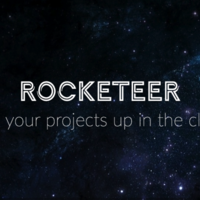3.1. 链接和阶段
这是一篇协同翻译的文章,你可以点击『我来翻译』按钮来参与翻译。
请对照 原文链接 进行翻译
CONNECTIONS AND STAGES
You'll meet two main concepts when it comes to communicating with your server : Connections and Stages.
Connections
Configuration
Connections represent the various servers you may want to connect to. You'll configure those in config.php. Here's what a connection may look like :
'connections' => array(
'production' => array(
'host' => 'my-server.com',
'username' => 'johndoe',
'password' => '',
'key' => '/Users/johndoe/.ssh/id_rsa',
'keyphrase' => '',
),
),
You can connect by two ways to a server : via a password, or via an SSH key. So if you're connection with a password you can leave key and keyphrase empty, etc.
Important note : you do not have to put your credentials here. Rocketeer uses a fallback system that allows you to not have to put your credentials in files that may be tracked. So if you leave all of those fields empty, Rocketeer will prompt you for them and store them in an hidden file. All that matters is that your connection is defined. Meaning this :
'connections' => array(
'production' => array(),
),
Is a perfectly valid connection.
Multiple connections
Now this was a fairly basic connection. Now imagine a more complicated setup, you might have multiple connections :
'connections' => array(
'production' => array(
'host' => 'my-server.com',
),
'staging' => array(
'host' => 'staging.my-server.com',
),
),
From there to interact with those two connections, there are multiple ways. First you can change the value of the default array in the config.php file we've been editing :
'default' => array('production', 'staging'),
What this array means is : whenever you'll execute a Task, Rocketeer will execute it on all of those connections. But now, that may not be what you want, you may want to cherry-pick what you do on what. For this you'll use the --on flag.
Take a deploy command, you'd execute it like this normally : rocketeer deploy. To select which connections to deploy to, you'll pass one or more connections to it as a flag :
$ rocketeer deploy --on="staging"
$ rocketeer deploy --on="staging,production"
Multiserver connections
Sometimes you might have a connection that is actually represented by multiple servers, and want each of those affected when dealing with that connection. Rocketeer allows that using a simple servers array when defining your connection:
'connections' => array(
'production' => array(
'servers' => array(
array(
'host' => 'first-server.com',
'username' => 'johndoe',
'password' => '',
'key' => '/Users/johndoe/.ssh/id_rsa',
'keyphrase' => '',
),
array(
'host' => 'second-server.com',
'username' => 'johndoe',
'password' => '',
'key' => '/Users/johndoe/.ssh/id_rsa',
'keyphrase' => '',
),
),
),
),
Stages
In the realm of Rocketeer, stages are separated environments on a given connection. Here is a classic folder organization scaffolded by Rocketeer :
| my-app
| -- current
| -- releases
| ----- 20140119010101
| -- shared
A server with multiple stages, say testing and production will on the other hand look like this :
| my-app
| -- testing
| ----- current
| ----- releases
| -------- 20140119010101
| ----- shared
| -- production
| ----- current
| ----- releases
| -------- 20140519413121
| ----- shared
Everything you do on a stage is self-contained.
Configuration
Configuring stages is fairly easy, you'll want to open the stages file. To define how many stages you have and their names, simply fill the array (per example for our setup above) :
'stages' => array('testing', 'production'),
Just like for connections, you can chose which stages to execute tasks on by default via the default array. It works exactly the same way :
'default' => array('testing'),
Multiple stages
Just like for connections, you can pass a flag to execute tasks on a particular stage :
$ rocketeer test --stage="testing"
Contextual configuration
Now that's all good and stuff but, you only have one set of configuration files, if you have three servers each with three stages, surely the configuration will vary from one to the other.
Rocketeer handles contextual configuration via nested arrays, which you can find in the main config.php file (where you define your connections). Let's take a fairly classic example, you have two servers, and the path to PHP is different in both. Now usually the path to PHP can be found in the paths.php file, under php. So here's how we'd define it for our two connections :
'on' => array(
'connections' => array(
'staging' => array(
'paths' => ['php' => 'PATH-TO-PHP'],
),
'production' => array(
'paths' => ['php' => 'PATH-TO-PHP'],
),
),
),
Everything you'll put in either staging or production here will be a miniature version of the configuration files Rocketeer created. To override any key, simply create an array named like the file (here paths) and put the config in there.
File-based alternative
Now as this can get quite lengthy and you don't want to work in an array nested in an array nested in an array nested in an array, here's how you can proceed if you have a lot of things to override. Rocketeer will by default read any connections and stages folder created within the configuration folder. Say you want to deploy the master branch on your production connection, and deploy the develop branch on your staging connection, you'd create the following files:
| .rocketeer
| -- connections
| ---- production
| ------ scm.php
| ---- staging
| ------ scm.php
connections/production/scm.php
<?php return array(
'branch' => 'master',
);
connections/staging/scm.php
<?php return array(
'branch' => 'develop',
);
Same goes for branches, just create per example .rocketeer/stages/staging/somefile.php to override some options from the default configuration.
本文中的所有译文仅用于学习和交流目的,转载请务必注明文章译者、出处、和本文链接
我们的翻译工作遵照 CC 协议,如果我们的工作有侵犯到您的权益,请及时联系我们。

 Rocketeer 中文文档
Rocketeer 中文文档

 关于 LearnKu
关于 LearnKu




推荐文章: